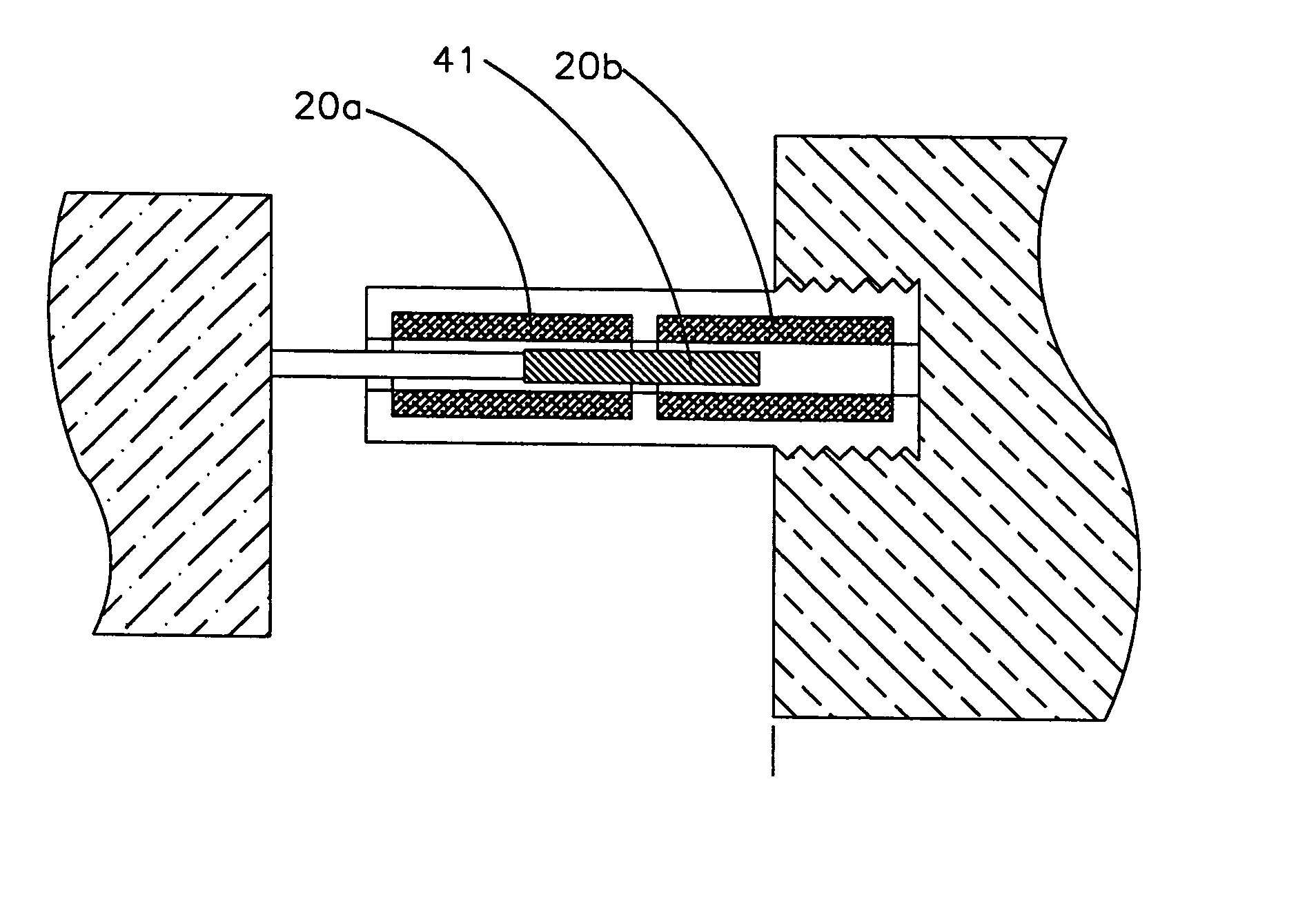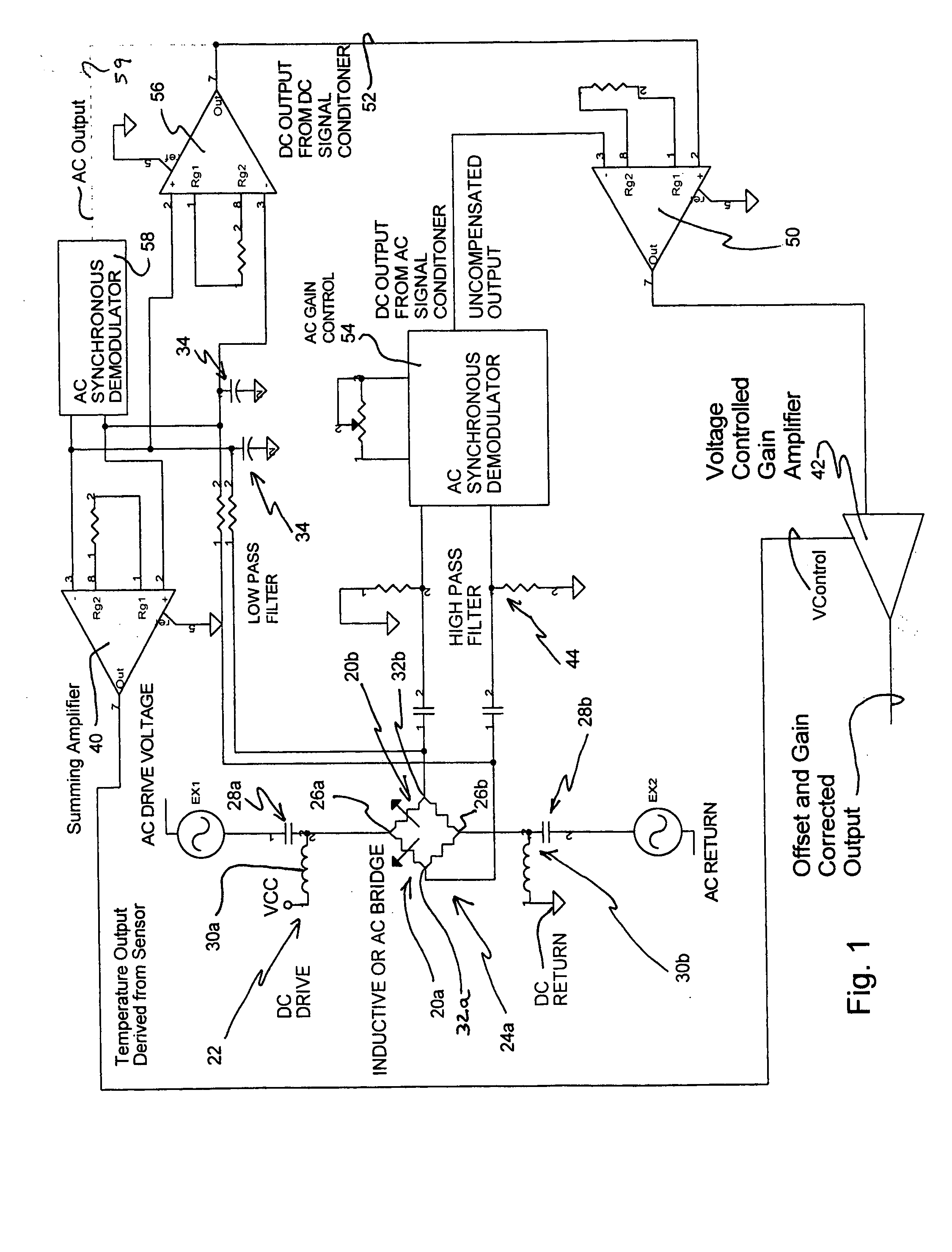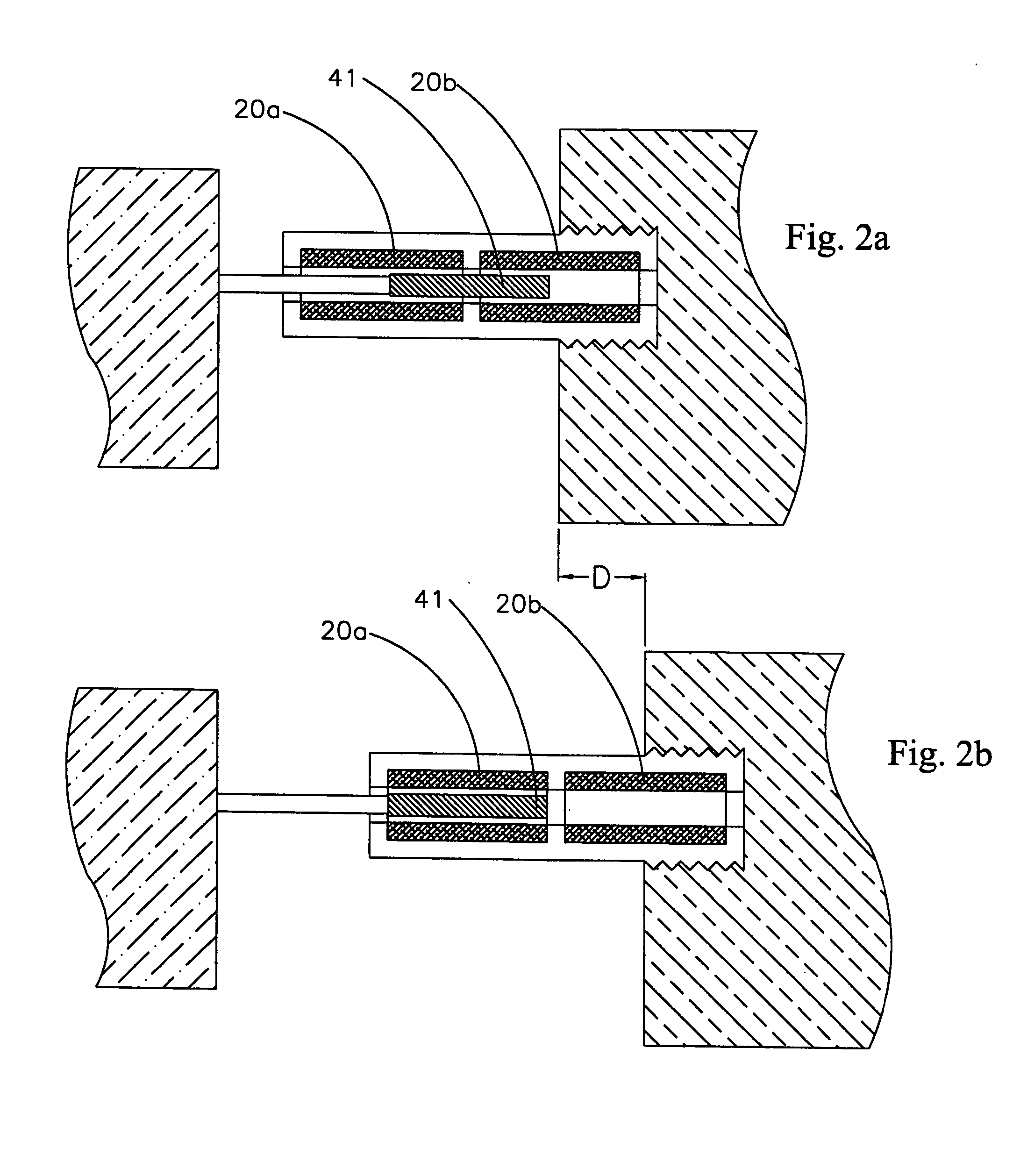Circuit for compensating for time variation of temperature in an inductive sensor
a technology of inductive sensor and circuit, applied in the field of sensors, can solve the problems of reducing absolute accuracy, limiting the overall absolute accuracy of inductive transducers, and variable output of sensors, and achieve the effect of accurate data
- Summary
- Abstract
- Description
- Claims
- Application Information
AI Technical Summary
Benefits of technology
Problems solved by technology
Method used
Image
Examples
Embodiment Construction
[0027] The present inventors recognized that a DVRT sensor that includes the circuit of '593 patent, incorporated herein by reference, provides substantial advantage in temperature compensation, but does not include all the temperature correcting needed. They recognized that a bridge circuit, such as that included in a DVRT, cancels the effects of uniform changes in temperature in the wiring of the coils of the DVRT, a substantial advantage for such differential sensors. They also recognized that the circuit of the '593 patent adequately corrects for the different coil wire resistances introduced by temperature gradients across the coils, an advantage in applications, such as automotive where such temperature gradients are common. The inventors then recognized an additional mechanism by which a change temperature can cause errors: the magnetic permeability of the ferrite core varies with temperature. This change in permeability with temperature introduces a change in the inductance ...
PUM
 Login to View More
Login to View More Abstract
Description
Claims
Application Information
 Login to View More
Login to View More - R&D
- Intellectual Property
- Life Sciences
- Materials
- Tech Scout
- Unparalleled Data Quality
- Higher Quality Content
- 60% Fewer Hallucinations
Browse by: Latest US Patents, China's latest patents, Technical Efficacy Thesaurus, Application Domain, Technology Topic, Popular Technical Reports.
© 2025 PatSnap. All rights reserved.Legal|Privacy policy|Modern Slavery Act Transparency Statement|Sitemap|About US| Contact US: help@patsnap.com



